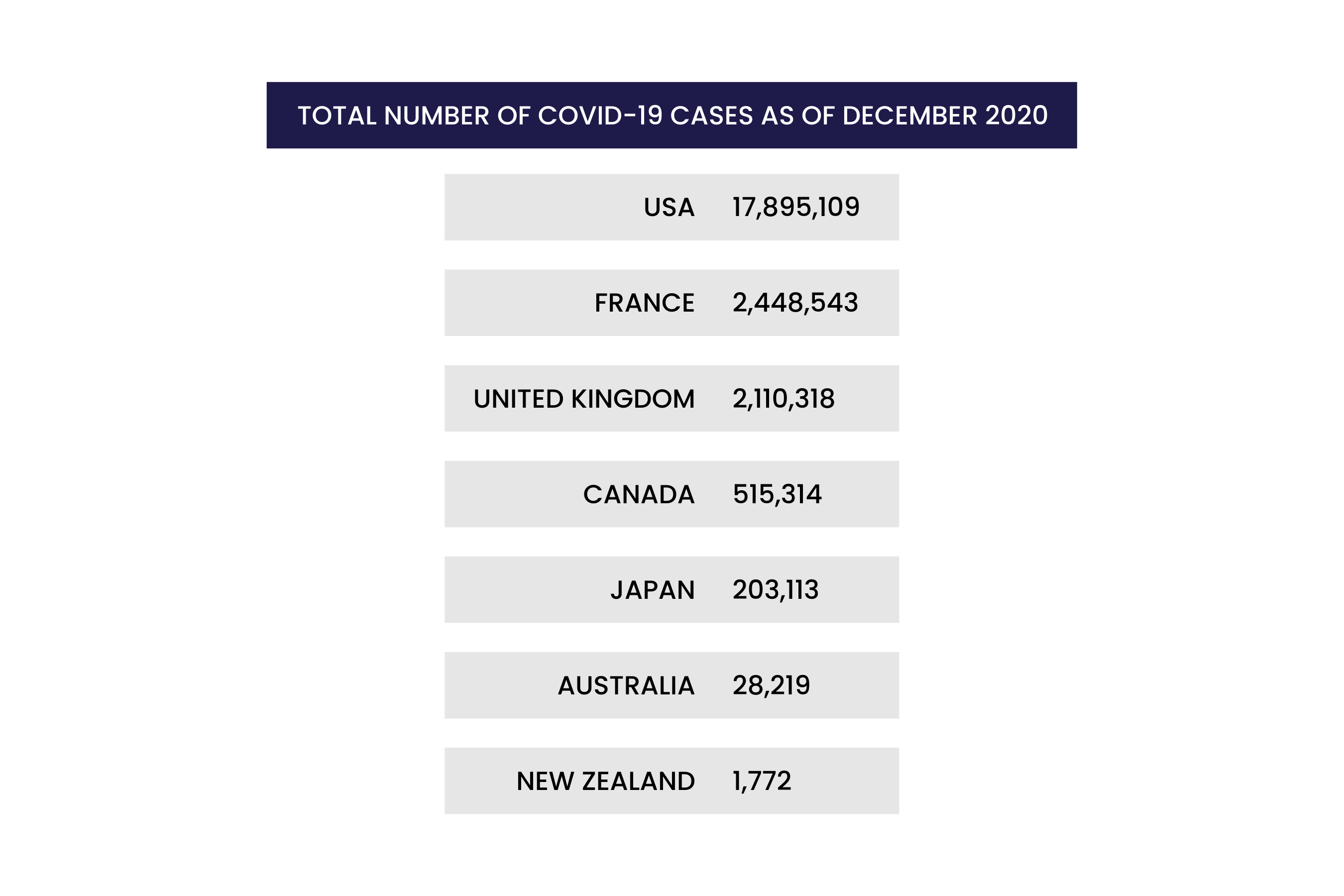A COVID Safe 2021
As we reach the end of December we’re taking this opportunity to look back at the year that was. The first confirmed case of coronavirus in Australia was just over 12 months ago, on the 25th of January 2020. By the 11th of March, the World Health Organization had declared the virus to be a global pandemic. As of 24 December 2020, Australia has had a total of 28,219 confirmed cases; this is a relatively low number compared to other developing countries.

Due to the lack of a specific treatment or vaccine, the only way to combat this virus was for the government to enforce social restrictions. These restrictions have helped reduce the number of daily cases and are the reason Australia has very low cases numbers today. They have also had disastrous effects on the economy, mental health, and our livelihood.
As restrictions across the country are beginning to ease and the reopening of state/territory borders, the term ‘COVID normal’ keeps popping up. We have been told that this is going to be our ‘new normal’ way of life, but what exactly does this look like? Will approval of a vaccine change this?
COVID normal:
According to the Australian government, this new normal involves all industries reopening without restrictions in place beside the 1.5-meter physical distancing. For this to happen all workplaces, business, education centres etc. must have a COVID safe plan in place and record personal details of everyone that visits. This COVID safe plan will outline how employees are kept safe and what procedures are in place if an outbreak occurs. All gatherings and events over 500 people require approval and events under this number are allowed if a COVID safe plan is in place, they must be ticketed, and details need to be recorded. The only time masks will be applicable is if you cannot physically distance due to your work, for example, beautician and healthcare workers. International travel will return with no need to quarantine between countries that have a low coronavirus risk, for example, New Zealand.
2021 is looking brighter compared to the year we have all endured, we can finally see interstate family and friends again, and the economy is getting back on its feet with the reopening of hospitality and other industries. The physical distancing of 1.5 meters, hand hygiene and recording of contact details looks to be here to stay for the foreseeable future. COVID normal aims to keep the number of cases at a manageable leave and reduce the risk of transmission in the absence of a vaccine or specific treatment. Life cannot go back to the way it was before COVID until a vaccine is approved, and the immunization levels are sufficient within the community to protect against this virus.
Vaccine Implications:
Three vaccine sponsors/companies have indicated their intentions to gain approval in Australia: Pfizer, AstraZeneca and Janssen-Cilag vaccines. AstraZeneca and Pfizer have provided preliminary data to the Therapeutics Good Administration (TGA). The Pfizer vaccine has been approved for emergency use in the United Kingdom. Phase 3 trials have shown that this vaccine is 95% effective against COVID-19 in participants without prior infection from the virus.
For the approval of these vaccines for use in Australia, further clinical and safety studies, as well as manufacturing and risk management data, needs to be provided to the TGA. Even after approval, the TGA will continue to monitor, and quality checks each batch to ensure safety and efficacy of the vaccine. The Australian government had an agreement of with four potential vaccines as well as being a part of the international COVAX agreement. This will give the government access to 134 million doses of a vaccine, which they will provide to the Australian population for free. Vaccination will not be mandatory but is expected to become available to the public in early 2021.
The approval of a COVID vaccine will help Australia move beyond ‘COVID normal’ and go back to how life used to be pre-COVID. For this to happen there needs to be sufficient immunization within the community. With the vaccination providing protection against the virus, there will be no need to physically distance, wear a mask or restrict gatherings.
Resources:
Australian Government, Department of Health. October 2020. ‘Framework for National Reopening’ Coronavirus (COVID-19) health alert. https://www.australia.gov.au/content/dam/australia/news-and-updates/framework-national-reopening.pdf
Pfizer. ‘Pfizer and BioNTech Achieve First Authorization in the World for a Vaccine to Combat COVID-19’ 02/12/2020. https://www.pfizer.com/news/press-release/press-release-detail/pfizer-and-biontech-achieve-first-authorization-world
P.Kelly, 07DEC2020. ‘COVID-19 vaccine to help us win the race’. Australian Government, Department of Health, Department of media enquiries. https://www.health.gov.au/news/covid-19-vaccine-to-help-us-win-the-race
Australian Institute of Health and Welfare. (2020). Australia’s health 2020: data insights. Chapter 2- ‘Four months in: what we know about the new coronavirus disease in Australia’. Canberra: AIHW. DOI:10.25816/5f05371c539f3. https://www.aihw.gov.au/reports/australias-health/australias-health-2020-data-insights/contents/summary
World Health Organisation. WHO Coronavirus Disease (COVID-19) Dashboard. Accessed 24/12/2020. https://covid19.who.int/